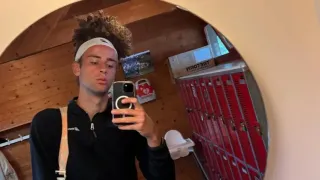
Nov 9
“Is Canada Really Our Queer Escape Hatch? The Truth Behind the LGBTQ+ Asylum Surge”
READ TIME: 4 MIN.
There’s a new migration pattern taking shape—and it’s not your classic snowbird shuffle. In 2025, a record-breaking number of LGBTQ+ Americans are looking to Canada as a potential safe haven, escaping a wave of U.S. laws and policies that threaten queer and transgender rights at every turn. For many, the “Great Gay North” has long been imagined as a pink-tinged utopia: marriage equality enshrined, gender markers respected, rainbow crosswalks aplenty. But is the dream as attainable as it seems? Let’s take a closer look at the realities behind this urgent exodus—and whether Canada is truly the queer escape hatch we hope for.
In the first half of 2025 alone, 245 Americans filed refugee claims in Canada—surpassing the entire total for 2024 and marking the highest number since before the pandemic. The surge is small in absolute terms, but the leap is historic and, more importantly, deeply personal for those making the journey. The driving force? A rapidly changing U.S. legal and political landscape, especially for transgender people. State legislatures have rolled back gender-affirming healthcare, banned trans athletes, and introduced restrictions on pronouns and bathroom access, while the federal government and courts have signaled less protection for LGBTQ+ people overall .
Immigration lawyers say transgender Americans are “overrepresented” among asylum applicants—think a trans woman from Arizona seeking safety, or parents filing claims on behalf of their trans kids. These are not abstract legal maneuvers; they’re acts of desperation and hope, fueled by the sense that “home” has become hostile .
But before you pack your rainbow suitcase, know this: Canada’s asylum system is not an open door, even for queer Americans. The Immigration and Refugee Board of Canada (IRB) has started including international human rights reports in its assessments, looking closely at the risks LGBTQ+ people face in the U.S. But here’s the catch—Canada officially treats the U.S. as a “safe country.” That means to win asylum, Americans must prove that there is nowhere in their entire country where they could live safely as a queer or trans person. That’s a tough legal mountain to climb, and most claims fail .
Rejected claimants can end up in legal limbo, sometimes even facing detention or the threat of removal to a third country if both the U.S. and Canada deny them protection. The risk is not theoretical: some LGBTQ+ applicants have become “stateless” in practice, stuck in a bureaucratic no-man’s-land .
And for those who simply want to move for a better life—say, through work or family sponsorship—Canada has a points-based immigration system that, while lauded for fairness, is also a fortress of paperwork and quotas. Permanent resident admissions are being stabilized at less than 1% of Canada’s population annually, with no special lanes for queer or trans applicants from the U.S. .
If you do make it across, what awaits? Some very real reasons for hope. Recent research shows that queer immigrants to Canada tend to be highly educated, often arrive as economic or family class applicants, and—here’s the kicker—out-earn their heterosexual immigrant peers over time. Queer men, in particular, see steeper wage growth in their first decade in Canada, a trend researchers link to the unique social and economic capital that LGBTQ+ newcomers bring from both ethnic and queer communities .
That said, the journey isn’t without its own cultural landmines. Canada bills itself as one of the world’s most queer-friendly countries, but lived experiences can vary widely depending on where you land. Metropolitan hubs like Toronto, Vancouver, and Montreal are famously inclusive, but smaller communities may offer less robust support networks. And integration takes time: building new circles, finding affirming healthcare, and navigating subtle forms of bias can be daunting, especially for racialized or multiply-marginalized queer immigrants .
There’s another twist for LGBTQ+ travelers and would-be immigrants: documentation drama. In late 2025, Canada updated its travel advisory for Canadians heading to the U.S., warning that American authorities may refuse to recognize “X” gender markers on passports. U.S. federal systems are reportedly shifting to require sex assigned at birth on key documents—including visa applications, passenger manifests, and even Social Security forms. The advisory cautions 2SLGBTQI+ people (Canada’s inclusive acronym) to expect uneven and sometimes hostile treatment at state and local levels—and to double-check the rules before crossing .
Quoting the official advisory: “While the Government of Canada issues passports with a ‘X’ gender identifier, it cannot guarantee your entry or transit through other countries… You might face entry restrictions in countries that do not recognize the ‘X’ gender identifier.”
What does all this mean for queer and trans Americans dreaming of a northern escape? The fantasy of Canada as a seamless sanctuary is powerful, but the reality is layered—equal parts hope and hard truth. The spike in asylum claims is a wake-up call to both countries: safety for LGBTQ+ people cannot be taken for granted, even in places with rainbow crosswalks and parade floats.
For those considering the leap: seek legal advice, document your risks, and connect with LGBTQ+ organizations on both sides of the border. For allies and advocates: this is a moment to push for more inclusive policies, smarter immigration reforms, and above all, solidarity with those who need safe harbor—wherever they may find it.
The border may be a line on a map, but for queer and trans lives, it’s become a battleground—and a beacon. Whether you’re staying, fleeing, or simply watching, one thing is certain: the search for queer safety is far from over, but the courage to pursue it is stronger than ever.






